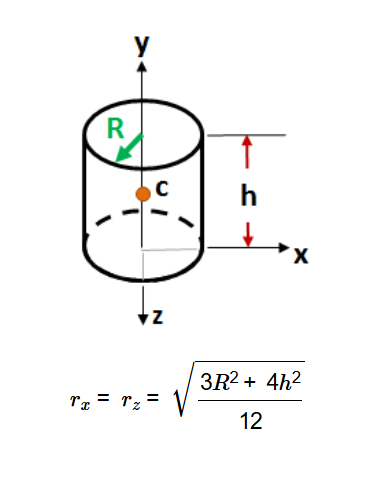 Home
Home
 Back
Back

Definition: This calculator computes the radius of gyration (\( r_x = r_z \)) of a solid cylinder about the x or z axis (perpendicular to the cylinder's height), based on its radius (\( R \)) and height (\( h \)).
Purpose: It is used in mechanics and engineering to analyze the mass distribution of a rotating cylinder, applicable in designs involving rotating machinery, structural beams, and dynamics studies.
The calculator uses the relationship:
Where:
Explanation: Enter the radius and height of the cylinder in the chosen units, and the calculator computes the radius of gyration. Results are displayed with 5 decimal places. For default inputs (\( R = 0.1 \, \text{m} \), \( h = 0.5 \, \text{m} \)), the calculated radius of gyration \( r_x = r_z \) is approximately 0.29306 m.
Details: The radius of gyration represents the distribution of an object's mass relative to an axis of rotation. It is crucial for calculating the moment of inertia (\( I = m \cdot r^2 \)) and understanding rotational dynamics in engineering applications.
Tips: Enter positive values for radius and height with up to 4 decimal places (step of 0.0001), then click "Calculate." Results show the radius of gyration \( r_x = r_z \) in meters, centimeters, feet, and inches, always with 5 decimal places.